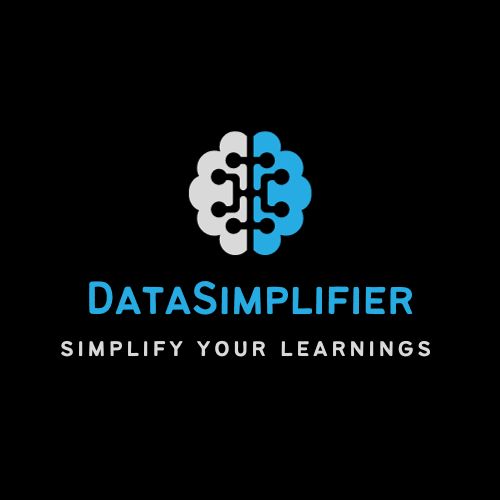Introduction
Are you an Indian student or working professional looking to break into the exciting world of data science? Are you preparing for interviews for data science roles and yearning for a clear understanding of the responsibilities associated with each position? This comprehensive guide on data science roles and responsibilities is your one-stop solution! We’ll delve deep into the roles of Data Scientists, Data Analysts, Data Science Engineers, and more, so you’re well-prepared to tackle interview questions with confidence.

This guide covers everything – from data analytics roles and responsibilities to data science team roles and responsibilities, data science intern roles and responsibilities, and even data science manager roles and responsibilities. Whether you’re starting your career or aiming for leadership positions, this resource is your ultimate roadmap to success.
This article meticulously explores the diverse roles within the data science ecosystem. We’ll unravel the key responsibilities for each role, outline essential skills for success, and provide practical advice to help you navigate this exciting field. Let’s equip you with the tools to thrive in the ever-growing domain of data science!
Understanding Data Science Roles and Responsibilities
The field of data science is broad, encompassing a wide range of roles, each with unique responsibilities. Let’s explore some key roles and their distinct contributions:
1. Data Scientist

- Key Responsibilities:
- Collect, clean, and preprocess data.
- Build and fine-tune machine learning models.
- Derive actionable insights and communicate results to stakeholders.
- Skills Required: Statistical analysis, programming (Python, R), machine learning, and excellent communication skills.
2. Data Analyst
- Key Responsibilities:
- Analyze datasets to uncover trends and insights.
- Create dashboards and visualizations to support decision-making.
- Generate business reports for stakeholders.
- Skills Required: Data visualization (Tableau, Power BI), SQL, statistical analysis, and business acumen.
3. Data Engineer
- Key Responsibilities:
- Design, build, and maintain data pipelines.
- Optimize data storage solutions for scalability.
- Ensure data availability and security.
- Skills Required: Big data tools (Hadoop, Spark), database management, cloud computing, and programming (Java, Python, Scala).
4. Data Science Intern

- Key Responsibilities:
- Support data collection and preprocessing tasks.
- Assist in model development and testing.
- Document processes and findings.
- Skills Required: Basic programming, data wrangling, enthusiasm for learning.
5. Data Science Manager
- Key Responsibilities:
- Oversee project planning and execution.
- Manage teams, budgets, and resources.
- Act as a liaison between technical teams and business stakeholders.
- Skills Required: Leadership, strategic thinking, project management, and deep technical expertise.
6. Data Science Team Roles
Data science teams are structured to leverage diverse skills. Typical roles include:
- Machine Learning Engineers: Focus on deploying scalable ML solutions.
- Business Analysts: Bridge the gap between technical teams and business needs.
- Data Architects: Design and manage data infrastructure.
Key Responsibilities Across Data Science Roles
While each role has its unique responsibilities, there are several core tasks common across various data science roles:
- Data Wrangling: Cleaning and preprocessing raw data to make it usable.
- Feature Engineering: Creating meaningful features for machine learning models.
- Model Building and Evaluation: Developing predictive models and assessing their performance.
- Data Visualization: Creating charts and dashboards to present insights clearly.
- Collaboration: Working with cross-functional teams to achieve business goals.
Understanding these tasks helps in aligning individual roles with team objectives and ensures successful project outcomes.
Practical Tips for Success in Data Science

- Upskill Continuously: Stay updated with the latest tools and techniques. Platforms like Coursera and Kaggle offer excellent resources.
- Build a Portfolio: Showcase your projects on GitHub or a personal website to demonstrate your skills.
- Network Actively: Join data science communities and attend webinars to expand your connections.
- Prepare for Interviews: Practice common interview questions and case studies specific to your targeted role.
Conclusion
Congratulations on completing this guide! You’ve gained a comprehensive understanding of the diverse roles in data science, from entry-level positions like Data Science Interns to leadership roles like Data Science Managers. This in-depth exploration of data science roles and responsibilities has provided you with the knowledge and insights needed to excel in your career.
This guide is designed to help you succeed in interviews and thrive in your data science journey. If you’re ready to put your knowledge into practice, explore additional resources and join our growing community of AI, ML, and Data Science enthusiasts.
Don’t forget to join our 10+ Telegram channels dedicated to AI, ML, Data Science, and Cybersecurity. Let us know your thoughts and experiences in the comments below. Add your Telegram handle, and we’ll invite you to our premium groups, where you’ll gain access to exclusive job opportunities and resources. Your journey to success starts here!
Share the post with your friends

1 thought on “The Ultimate Guide to Data Science Roles and Responsibilities | Best Overview”